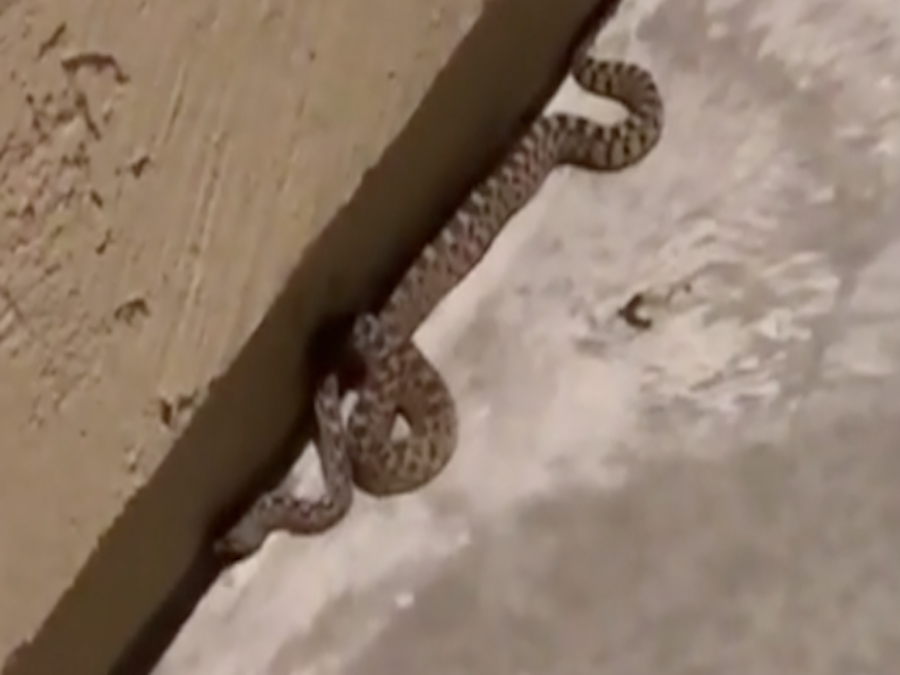PHOENIX — Meet the Arizona Bark Scorpion -- the most common scorpion in the Phoenix area out of the 60+ species of scorpions found in Arizona. It also happens to be the most venomous and only lethal scorpion in Arizona. In fact, the bark scorpion (Centruroides exilicauda) is the only scorpion species with venom strong enough to cause severe symptoms in the entire United States, according to the Mayo Clinic. Oh, and it is frequently found in homes, especially during the summer months.
Watch the video above to see what the Arizona Bark Scorpion looks like when it hunts!
Didi and Megan Ghelmegeanu own Desert Termites and receive swarms of calls about handling Arizona Bark Scorpions every summer. They informed us about this nefarious Sonoran critter.
The Arizona Bark Scorpion is light brown in color and 6-8 cm in length. Typically the females are smaller than males. The females give live birth during the summer months to a big litter (approximately 25-35) of scorplings, baby scorpions. The scorplings climb onto their mother's back and stay there for up to three weeks. She will protect the young until they have their first molt (when they shed their exoskeleton to grow larger) around three weeks of age. The Arizona Bark Scorpion's life expectancy is about six years.
Late Spring through late Summer is bark scorpion season in Phoenix. This nocturnal creature is a predator and can go days without eating. It feasts on smaller insects like beetles or spiders, centipedes, and even other scorpions. If you are wondering what eats this king of sting, you are looking at bats, birds (especially owls), large centipedes, grasshopper mice, lizards, tarantulas, and shrews.
Arizona Bark Scorpions are usually solitary creatures, only congregating in the winter. Megan Ghelmegeanu instructs you to exercise caution when walking your dog during the summer evenings because humans most often encounter scorpions during the night. "They glow in the dark at night so you should bring a black light with you on walks to be extra careful. The UV light makes them fluorescent at night."
The bark scorpion can be found in many places due to its ability to climb. During the day, these critters generally retreat to escape the heat to places of hiding in your yard and inside your home -- on top of tall block/rock walls, in rock/wood piles, under leaves, and (as their name suggests) in trees. Yes, they do climb certain types of trees. Since bark scorpions can climb, they can enter your home through your exterior vents. The creatures will flatten their stinger and squeeze into the smallest of cracks -- thinner than a credit card. Not only can they climb, but they can suspend from your ceiling and scamper across the room. You can also find bark scorpions trapped in bathtubs or sinks, inside dark closets or tucked into tiny nooks and crannies throughout your house. They have poor eyesight, so look for them traveling along your baseboards in search of their next meal.
Didi Ghelmegeanu explains that people encounter these scorpions during the day when their hiding place is accidentally disturbed. "The creatures typically don't attack unless they are provoked -- feeling threatened or needing to protect their offspring. Most common example is when people do yard work and move rocks that they are hiding under to escape the heat."
Best way to get rid of these Sonoran stingers? "Remove clutter in the backyard or things they can hide under," Didi suggests. "Scorpions prey on insects -- so if you eliminate their food source, scorpions will have nothing to prey on." Most insecticides are no match for the scorpion's body armor. The strategy Desert Termites recommends is called IPM: integrated pest management. Instead of relying on pesticides, do habitat manipulation. Use pest treatments to get rid their food source and they will typically leave.
Didi wants you to know that Arizona Bark Scorpion stings are rarely fatal for humans. In fact, very few deaths from scorpion stings have been reported in the United States, according to the Mayo Clinic. Who is in the most danger? The sting of the Arizona Bark Scorpion (if left untreated) can be fatal to young children, the elderly, the immunocompromised, and those who are allergic to the venom. Important to note that small pets are also in this danger category. Heart or respiratory failure could happen hours after the sting, if left untreated. The Arizona Bark Scorpion is the only species of scorpion in this state that is considered lethal. Most stings occur when people accidentally touch or step on the scorpion. Scorplings do have venom and are considered more dangerous than the adults because they have yet to learn how to control the amount of venom they are supposed to release...so watch out for these scorpions in all sizes!
Didi explains what happens if you get stung. "[The injection site] might hurt for a couple of hours, swelling at localized site, redness, might have some stiffening of surrounding muscles from the sting." His wife Megan chimes in, "Another way to identify an Arizona Bark Scorpion is to look at the size of the pincers. Bark scorpions have long, skinny, smaller pincers because their venom is stronger than that of other scorpions. Other scorpions have weaker venom but larger pincers."
IF YOU GET STUNG: Clean the wound with mild soap and water and immediately call Poison control at 1-800-222-1222!
MORE: Banner Poison Center reporting 18% rise in scorpion stings in 2020






